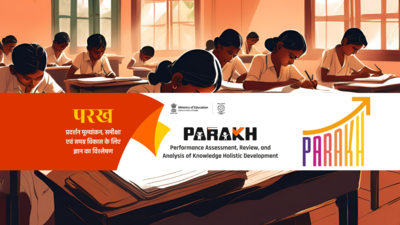The National Council of Educational Research and Training (NCERT) has introduced a significant change in the way India’s education system will be assessed, replacing the long-standing National Achievement Survey (NAS) with PARAKH Rashtriya Sarvekshan 2024.
The change, scheduled for December 4, 2024, marks a new approach to assessing the effectiveness of the country’s school education system. PARAKH, an independent assessment body under NCERT, is now responsible for this study at the national level, which will operate independently of the previous NAS framework.
While NAS, held every three years since 2001, focuses on assessing students’ competencies at different educational stages, PARAKH offers a more comprehensive and globally aligned assessment system.
A new approach with PARAKH Rashtriya Sarvekshan 2024
The introduction of PARAKH aims to create a broader understanding of the education landscape in India. Unlike the NAS, which primarily focuses on student performance in core subjects, PARAKH will assess entire schools as units, providing a system-level assessment of district education. This shift aligns more closely with international surveys such as the Program for International Student Assessment (PISA), which indicates a shift towards global best practices in educational assessment, according to NCERT.
The upcoming survey will cover 75,565 schools and assess over 22,94,377 students in grades 3, 6 and 9 in key subjects such as language, mathematics, science, social studies and the world around us. This wider scope aims to provide a detailed view of students’ learning journeys, identifying strengths and areas for improvement not only in individual students but also in the institutional structures supporting their education.
Key Differences between NAS and PARAKH Rashtriya Sarvekshan 2024
The most significant difference between NAS and PARAKH is the scope and framework of the assessment. The NAS has historically been a national survey aimed at understanding student performance at the elementary and secondary levels, assessing competencies in subjects such as math, science and language. The last NAS in 2021 surveyed over 1.18 lakh schools and included participation from over 34 lakh students of classes 3, 5, 8 and 10.
In contrast, PARAKH’s approach is at the system level, focusing on the basic, preparatory and secondary stages of education as outlined in the National Education Policy (NEP) 2020. The assessment will concentrate on grades 3, 6 and 9 and will assess the overall performance of schools in multiple areas. By using a combination of paper-based assessments and Optical Mark Recognition (OMR) technology, PARAKH introduces a more streamlined method of data collection and analysis.
Another critical difference is that PARAKH is designed to be independent of previous NAS reports. While NAS provided periodic snapshots of the education system, PARAKH aimed for continuous and comprehensive data.
Here’s an overview of the main changes –
What does PARAKH Rashtriya Sarvekshan 2024 aim to achieve?
PARAKH Rashtriya Sarvekshan 2024 is aligned with the principles of NEP 2020 by focusing on competency based assessment and not just content knowledge. It will assess how well students have developed critical thinking, problem solving and analytical skills essential for the future workforce. In addition to assessing student competencies, the survey will collect contextual data from teachers, students and schools to gain insight into learning environments and educational practices.
The data collected by PARAKH will be critical for policymakers, helping them make informed decisions about education reforms. By identifying the strengths and weaknesses of schools in different regions, the study will enable targeted interventions to improve teaching practices, infrastructure and learning outcomes. The goal is to make the education system more inclusive and meet the needs of students from different backgrounds.
How PARAKH Rashtriya Sarvekshan 2024 will benefit data-driven education reforms
One of PARAKH’s primary goals is to provide data-driven insights that can shape future education policies. The survey will collect data not only on student performance, but also on school infrastructure, teacher quality and classroom practices. This holistic approach ensures that education reforms are evidence-based and address the root causes of challenges in the system.
By aligning with international assessment standards, PARAKH also ensures that India’s education system remains globally competitive. The insights gained from this study will help the government and educational institutions to take strategic decisions to improve the overall quality of education in the country.
